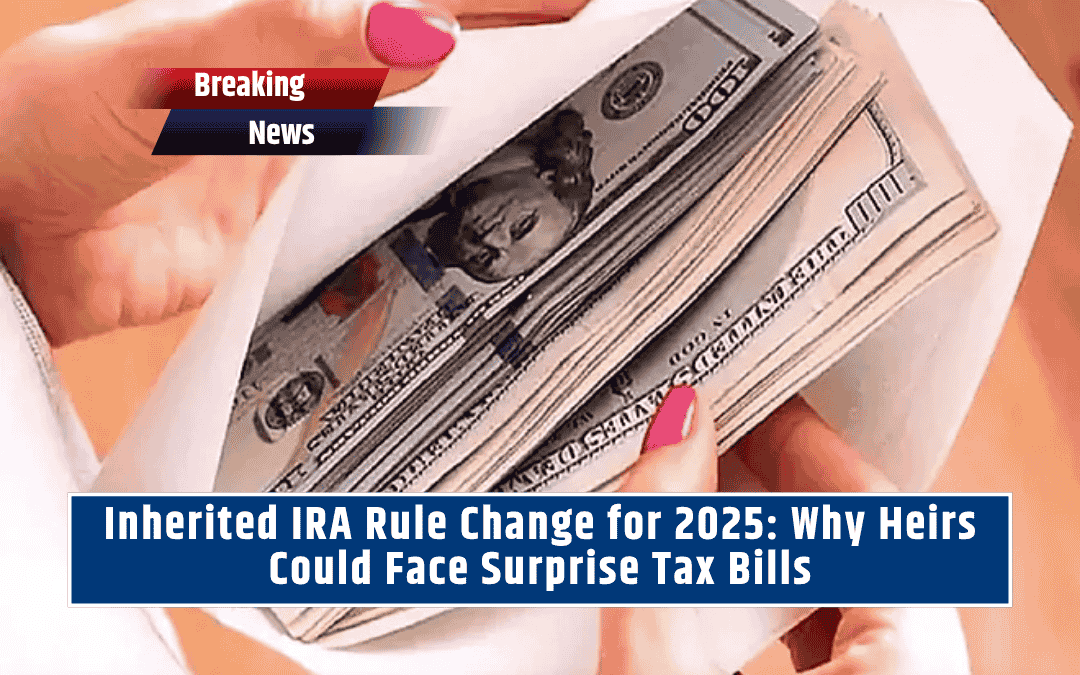As trillions of dollars move from baby boomers to younger generations, millions of Americans are poised to inherit not just wealth—but complex tax obligations.
Beginning in 2025, the IRS will start enforcing a long-debated rule requiring many heirs of inherited IRAs to take annual required minimum distributions (RMDs)—a change that could catch families off guard.
The New Enforcement Deadline
While the “10-year rule”—mandating that most non-spouse beneficiaries deplete an inherited IRA within 10 years—has existed since 2020, enforcement of annual RMDs is new.
The IRS had paused implementation to clarify the details, but that grace period officially ends in 2025. From then on, missing a withdrawal could trigger hefty penalties.
A Costly Mistake for the Unprepared
“If you don’t take the required distribution, you’re looking at a penalty of up to 25% of the amount you should have withdrawn,” warned Denise Appleby, CEO of Appleby Retirement Consulting.
“That’s a big hit for someone who may not even realize they’ve done something wrong.” The good news: prompt correction can reduce the penalty to 10% if the withdrawal is made within two years.
Who Must Take Annual Distributions?
Under the SECURE Act, most non-spouse heirs—such as adult children—must empty inherited IRAs within 10 years of the original owner’s death.
The new IRS guidance clarifies that if the original account holder had already reached RMD age before passing, the beneficiary must now take annual distributions during the 10-year period, rather than waiting until the end.
The “Grace Period” Is Over
“The grace period is over,” said Kristin McKenna, a certified financial planner with Darrow Wealth Management. “Heirs need to start planning now, or they could lose a significant chunk of their inheritance to unnecessary taxes.”
Beneficiaries who fail to act could face years of compounding penalties, paperwork headaches, and diminished retirement savings.
Why Strategy Is Now Essential
Even heirs not required to take annual RMDs must still empty inherited IRAs within 10 years, creating a major tax planning challenge. Large withdrawals made all at once—especially late in the decade—can push beneficiaries into higher income brackets, resulting in larger tax bills.
Experts say timing withdrawals strategically can save thousands in taxes.
How to Minimize the Tax Impact
Financial advisor Marianela Collado advises a proactive approach: “Play the income tax bracket game. Withdraw more in years when your income is lower, so you’re not hit with a massive tax bill later.”
For example, an heir between jobs or in early retirement could take larger withdrawals now to take advantage of lower tax rates.
The Clock Is Ticking on Lower Tax Rates
Adding to the urgency, several provisions from President Donald Trump’s 2017 Tax Cuts and Jobs Act will expire in 2026, potentially raising federal tax rates. That means heirs who postpone withdrawals could face a double blow—larger required distributions in a higher-tax environment.
“There are layers upon layers to consider,” McKenna said. “Without a coordinated plan, heirs can create a financial mess.”
The Scale of the Shift
This rule change comes as the U.S. experiences the largest wealth transfer in history. A Cerulli Associates study estimates that more than $100 trillion will pass from older generations to younger ones by 2048, much of it through retirement accounts like IRAs and 401(k)s.
Yet, many heirs remain unaware of the strict tax rules that accompany these inheritances.
Common Misconceptions About Inherited IRAs
According to a spokesperson from Clear Start Tax, many beneficiaries mistakenly believe that inherited IRAs function like regular investment windfalls.
“People assume they can leave the money untouched or withdraw it on their own schedule,” the spokesperson said. “But if you don’t follow the IRS rules, that gift can quickly become a financial burden.”
What Heirs Should Do Before 2025
To avoid penalties and confusion, financial experts urge heirs to act before the new enforcement date. Key steps include:
- Confirm the decedent’s age at death to determine if annual RMDs apply.
- Review IRS guidelines on inherited IRA withdrawal timelines.
- Consult a financial advisor or tax professional to develop a long-term withdrawal strategy that minimizes taxes.
- File IRS Form 5329 promptly if you missed an RMD and need to request penalty relief.
Communication Is Key
Families should also communicate clearly about inherited accounts. “Talk to your family, talk to your advisor, and don’t wait,” Appleby said.
“Because when it comes to the IRS, ignorance is not a defense.” Discussing estate plans before a parent or spouse passes away can help avoid confusion later and ensure compliance with changing tax rules.
A New Era for Inherited Wealth
The 2025 rule enforcement marks a turning point in how inherited retirement accounts are managed. With stricter IRS oversight and rising tax uncertainty, proactive planning is more important than ever.
For heirs, understanding the rules isn’t just about protecting an inheritance—it’s about preserving the legacy it represents.











